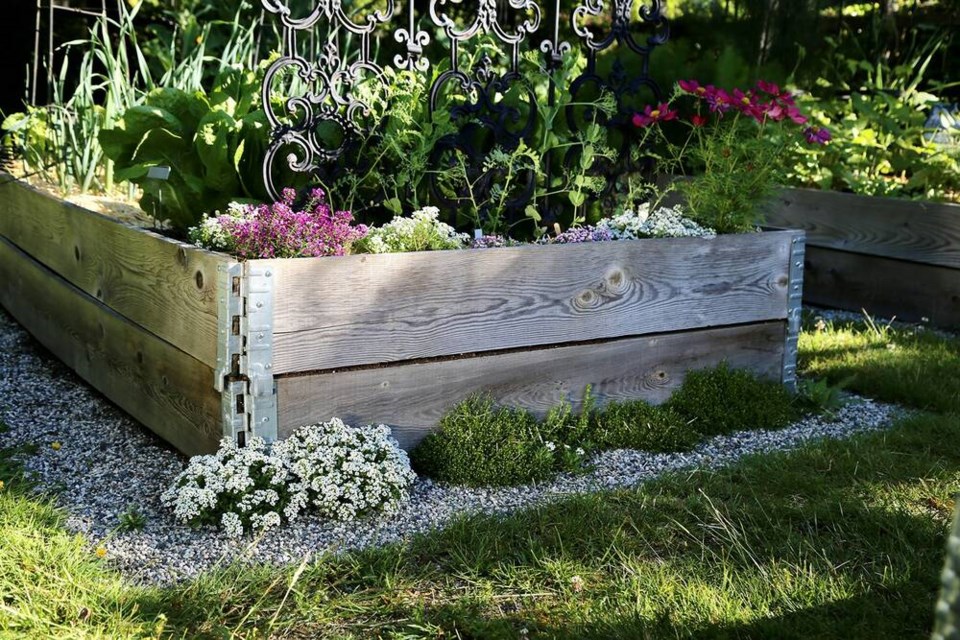Permaculture Principle 11, “Use edges and value the margins,” is not one which came easily to me at first, but over time I have come to embrace it, and truly understand its implications to humanity, and to managing a changing climate.
Margins are where creativity and beauty happen, in society and in landscapes. Along the edges of two systems – in the overlap – new systems are born of resilience. Flora and fauna from both systems pop up and thrive, mingling with new species that have adapted in the spaces between.
In hedgerows, on beaches, along creek beds, in wetlands, in the transitions between forest and meadows, and along roads and railways, we see diversity and constantly evolving ecosystems. In communities, innovation happens along the margins and edges, in the soft pockets of change and unspecified expectations.
In my life and gardens, I see beauty, creativity and resilience along the edges of our raised beds, in the tiny spaces between crushed rock comprising the paths. Under seemingly impossible conditions, a diverse community of plants take root and soften the otherwise hard and unremarkable edges.
Over time, the plants, which have chosen to live in community, grow and adapt and form the most beautiful examples of cooperation and adaptation. Below ground too, their root systems commune with microorganisms, sharing nutrients and ecosystem services – trading photosynthesized food energy for minerals pulled from the soil. It is miraculous.
Most mornings, rain or shine, I walk in the garden with a thermos cup of coffee. I see the newcomers and, whenever possible, resist the temptation to manage them, at least not at first. Tiny currant tomatoes, seeds deposited by birds or squirrels, thrive in the warm and dry seams of cedar and stone along the bean beds. Fennel, yarrow, sweet alyssum, strawberries, Irish moss, sword ferns and even spinach pop up alongside.
Left to their own, the tomatoes do what comes naturally in their native habitat, sprawling along the ground. I leave them. Indeed they are in the way as they spread along the paths, but they slow me down and remind me to tread carefully, lest I crush their tiny, phyto-nutritious gifts of sweetness, sized no bigger than my baby fingernail.
I learn so much from these so-called volunteers, and I am a better gardener and a more thoughtful human because of them. I know for certain that plants, like people, are at once highly adaptive, incredibly fragile and interdependent. Our permaculture property is creating its own macro ecosystem, linking zones intuitively, along their margins, and in so doing, building a healthier, resilient, more self-sufficient community.
The challenge of course is management. In a rural permaculture setting, I would likely not manage the sprawl, but amongst a community of neighbours living in a design managed area, I am beholden. Also, I like symmetry, straight lines and classic garden architecture. The two polar-opposite sides of my gardening brain clash, presenting challenges almost daily.
I’ve found solace in the edges and margins of the straight lines and symmetry that bring me peace. Not just solace, but opportunity, beauty and ecosystems services are created from within.
I understand now, this 11th principle. Nature knows what she needs and she will get it, in spite of us. There are so many invaluable lessons to be learned from our gardens, and the 12 principles of permaculture can help us live beautiful, abundant lives by deferring to natural logic.
We can keep our straight lines, symmetry and societal controls if we can learn to utilize the edges and value the margins.
Laura Marie Neubert is a West Vancouver-based urban permaculture designer. Follow her on Instagram @upfrontandbeautiful, learn more about permaculture by visiting her Upfront & Beautiful website or email your questions to her here.
For a taste of permaculture, watch the video below:




